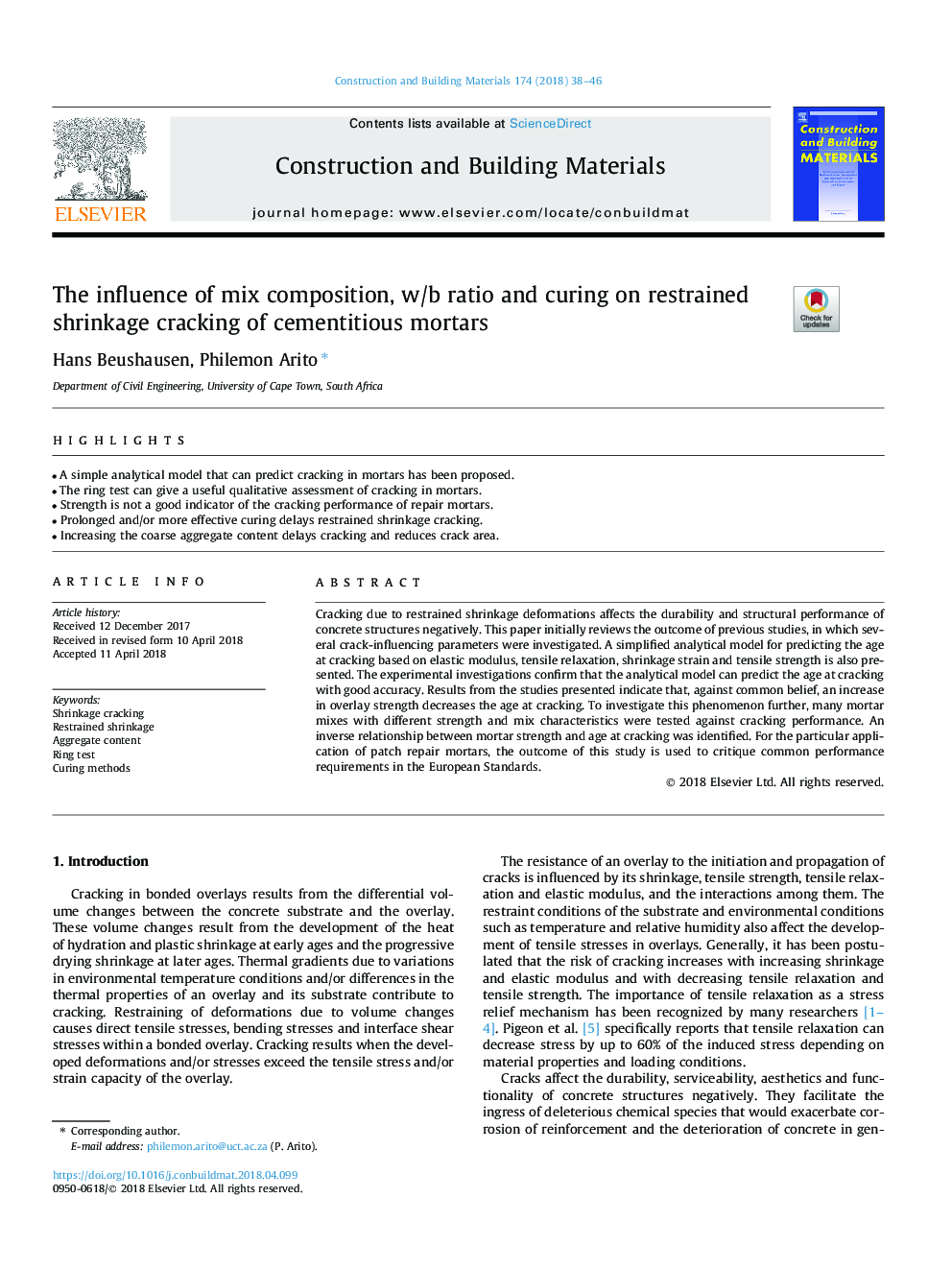| Article ID | Journal | Published Year | Pages | File Type |
|---|---|---|---|---|
| 6713311 | Construction and Building Materials | 2018 | 9 Pages |
Abstract
Cracking due to restrained shrinkage deformations affects the durability and structural performance of concrete structures negatively. This paper initially reviews the outcome of previous studies, in which several crack-influencing parameters were investigated. A simplified analytical model for predicting the age at cracking based on elastic modulus, tensile relaxation, shrinkage strain and tensile strength is also presented. The experimental investigations confirm that the analytical model can predict the age at cracking with good accuracy. Results from the studies presented indicate that, against common belief, an increase in overlay strength decreases the age at cracking. To investigate this phenomenon further, many mortar mixes with different strength and mix characteristics were tested against cracking performance. An inverse relationship between mortar strength and age at cracking was identified. For the particular application of patch repair mortars, the outcome of this study is used to critique common performance requirements in the European Standards.
Related Topics
Physical Sciences and Engineering
Engineering
Civil and Structural Engineering
Authors
Hans Beushausen, Philemon Arito,
